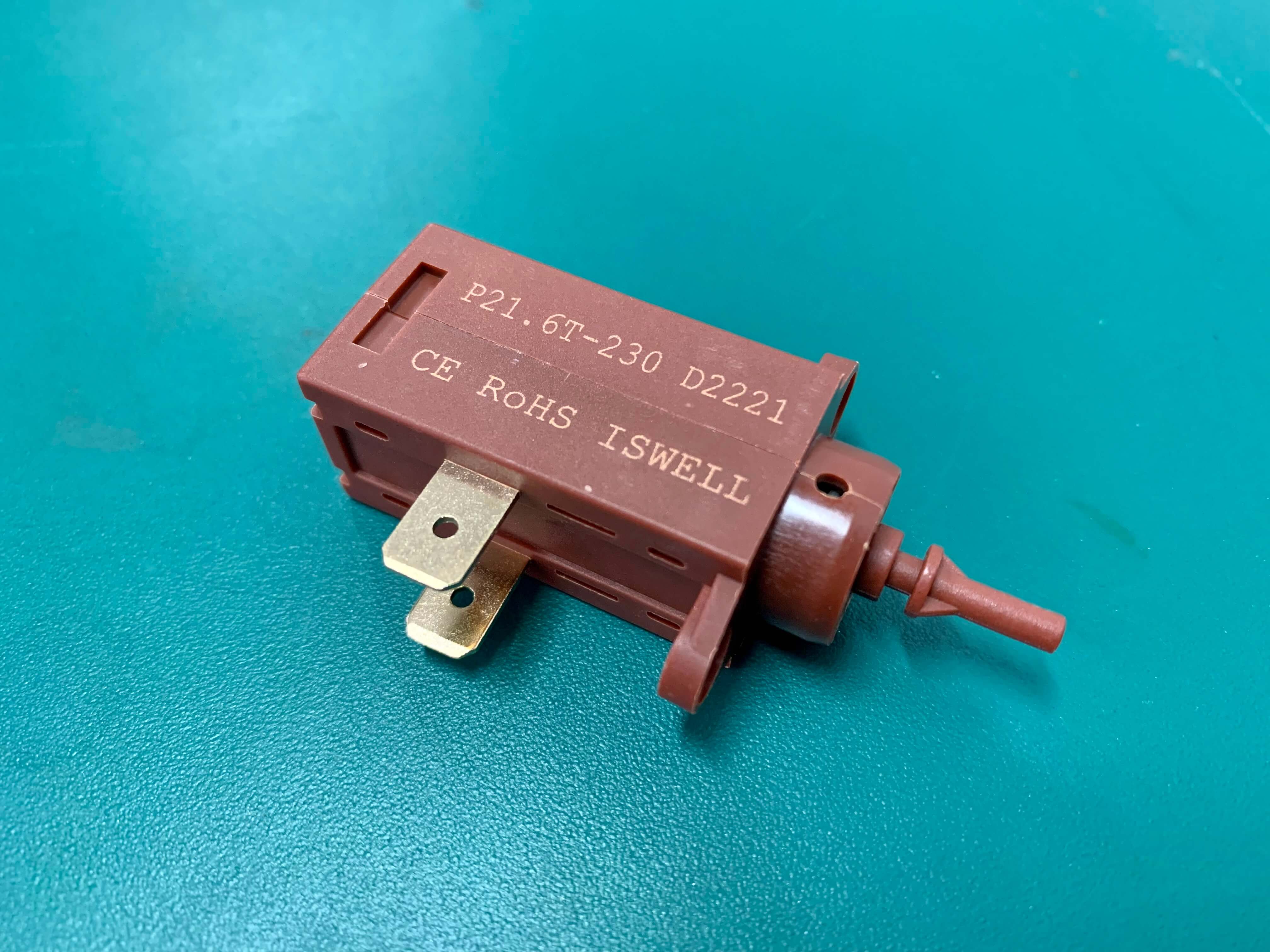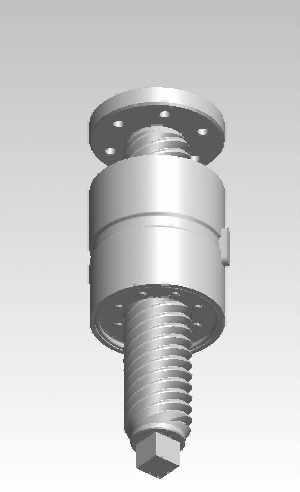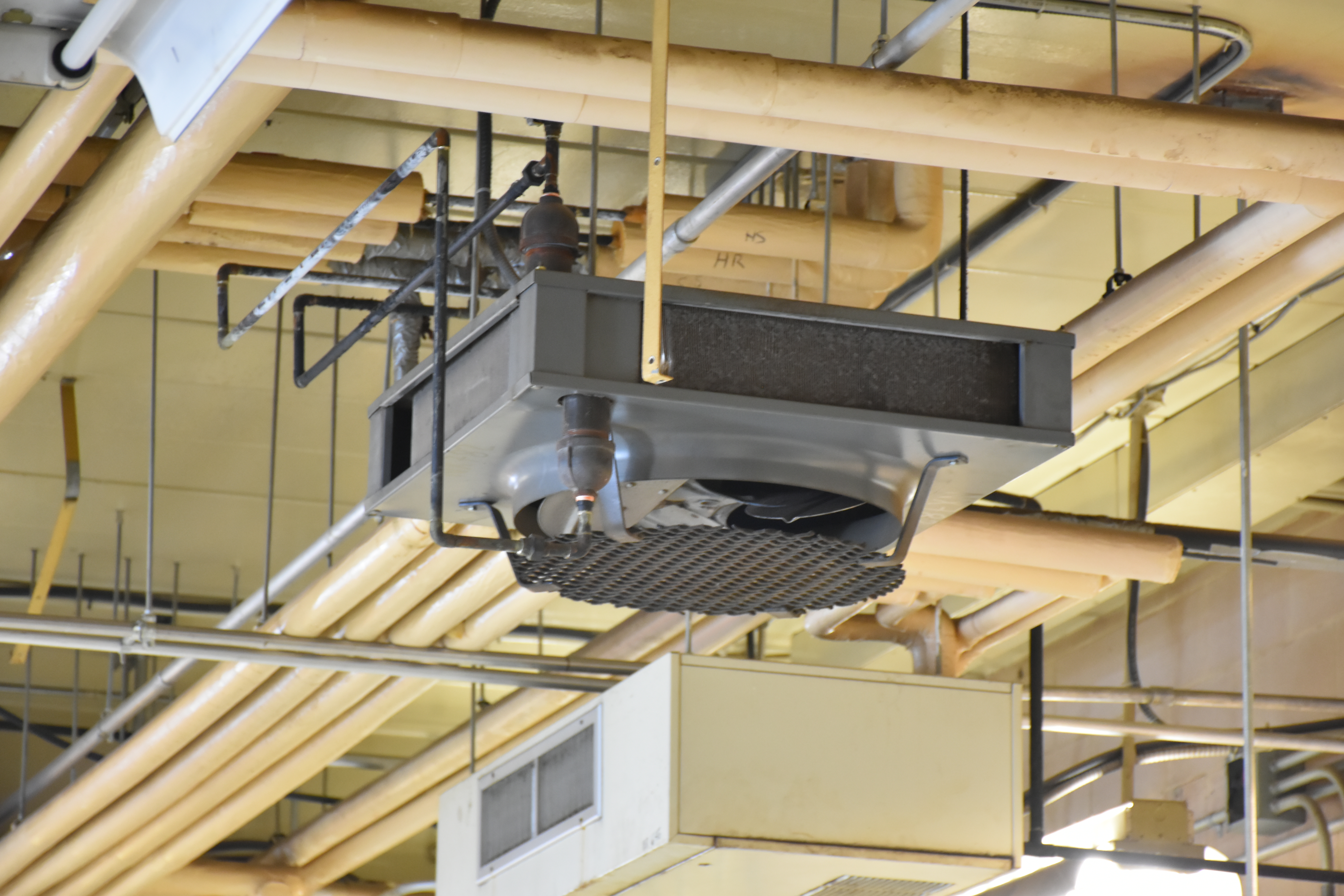|
Wax Motor
A wax motor is a linear actuator device that converts thermal energy into mechanical energy by exploiting the phase-change behaviour of waxes. During melting, wax typically expands in volume by 5–20% . A wide range of waxes can be used in wax motors, ranging from highly refined hydrocarbons to waxes extracted from vegetable matter. Specific examples include paraffin waxes in the straight-chain n-alkanes series. These melt and solidify over a well-defined and narrow temperature range. Design The principal components of a wax motor are: *An enclosed volume of wax *A plunger or stroke-rod to convert the thermo-hydraulic force from the wax into a useful mechanical output *A source of heat such as: **Electric current; typically a PTC thermistor, that heats the wax **Solar radiation; e.g. greenhouse vents **Combustion heat; e.g. excess heat from internal combustion engines **Ambient heat *A sink to reject heat energy such as: **Convection to cooler ambient air **Peltier effect device a ... [...More Info...] [...Related Items...] OR: [Wikipedia] [Google] [Baidu] |
Linear Actuator
A linear actuator is an actuator that creates linear motion (i.e., in a straight line), in contrast to the circular motion of a conventional electric motor. Linear actuators are used in machine tools and industrial machinery, in computer peripherals such as disk drives and printers, in valves and Damper (flow), dampers, and in many other places where linear motion is required. Hydraulics, Hydraulic or Pneumatics, pneumatic cylinders inherently produce linear motion. Many other mechanisms are used to generate linear motion from a rotating motor. Types Mechanical actuators Machine, Mechanical linear actuators typically operate by conversion of rotary motion into linear motion. Conversion is commonly made via a few simple types of mechanism: * Screw (simple machine), Screw: leadscrew, screw jack, ball screw and roller screw actuators all operate on the principle of the simple machine known as the screw. By rotating the actuator's nut, the screw shaft moves in a line. * Whe ... [...More Info...] [...Related Items...] OR: [Wikipedia] [Google] [Baidu] |
Washing Machine
A washing machine (laundry machine, clothes washer, washer, or simply wash) is a machine designed to laundry, launder clothing. The term is mostly applied to machines that use water. Other ways of doing laundry include dry cleaning (which uses alternative cleaning fluids and is performed by specialist businesses) and ultrasonic cleaning. Modern-day home appliances use electric power to automatically clean clothes. The user adds laundry detergent, which is sold in liquid, powder, or dehydrated sheet form, to the wash water. The machines are also found in commercial laundromats where customers pay-per-use. History Washing by hand Laundering by hand involves soaking, beating, scrubbing, and rinsing dirty textiles. Before indoor plumbing, it was necessary to carry all the water used for washing, boiling, and rinsing the laundry from a pump, Water well, well, or Spring (hydrology), spring. Water for the laundry would be hand-carried, heated on a fire for washing, and then poured i ... [...More Info...] [...Related Items...] OR: [Wikipedia] [Google] [Baidu] |
Butterworth-Heinemann
Butterworth–Heinemann is a British publishing company specialised in professional information and learning materials for higher education and professional training, in printed and electronic forms. It was formed in 1990 by the merger of Heinemann Professional Publishing and Butterworths Scientific, both subsidiaries of Reed International. With its earlier constituent companies, the founding dates back to 1923. It has publishing units in Oxford (UK) and Waltham, Massachusetts (United States). As of 2006, it is an imprint of Elsevier. See also *LexisNexis Butterworths LexisNexis is an American data analytics company headquartered in New York, New York. Its products are various databases that are accessed through online portals, including portals for computer-assisted legal research (CALR), newspaper search, ... References External links * Book publishing companies of the United Kingdom Elsevier imprints {{publish-corp-stub ... [...More Info...] [...Related Items...] OR: [Wikipedia] [Google] [Baidu] |
Hungarian Academy Of Sciences
The Hungarian Academy of Sciences ( , MTA) is Hungary’s foremost and most prestigious learned society. Its headquarters are located along the banks of the Danube in Budapest, between Széchenyi rakpart and Akadémia utca. The Academy's primary functions include the advancement of scientific knowledge, the dissemination of research findings, the support of research and development, and the representation of science in Hungary both domestically and around the world. History The origins of the Hungarian Academy of Sciences date back to 1825, when Count István Széchenyi offered one year's income from his estate to establish a ''Learned Society''. He made this offer during a session of the Diet in Pressburg (Pozsony, now Bratislava), then the seat of the Hungarian Parliament. Inspired by his gesture, other delegates soon followed suit. The Society’s mission was defined as the development of the Hungarian language and the promotion of sciences and the arts in the Hungarian l ... [...More Info...] [...Related Items...] OR: [Wikipedia] [Google] [Baidu] |
Wax Thermostatic Element
The wax thermostatic element was invented in 1934 by Sergius Vernet (1899–1968). Its principal application is in automotive thermostats used in the engine cooling system. The first applications in the plumbing and HVAC, heating industries were in Sweden (1970) and in Switzerland (1971). Wax thermostatic elements transform heat energy into mechanical energy using the thermal expansion of waxes when they melt. This wax motor principle also finds applications besides engine cooling systems, including heating system thermostatic radiator valves, plumbing, industrial, and agriculture. Automotive thermostats The internal combustion engine cooling thermostat maintains the temperature of the engine near its optimum operating temperature by regulating the flow of coolant to an air cooled radiator (engine cooling), radiator. This regulation is now carried out by an internal thermostat. Conveniently, both the sensing element of the thermostat and its control valve may be placed at the same ... [...More Info...] [...Related Items...] OR: [Wikipedia] [Google] [Baidu] |
Microelectromechanical Systems
MEMS (micro-electromechanical systems) is the technology of microscopic devices incorporating both electronic and moving parts. MEMS are made up of components between 1 and 100 micrometres in size (i.e., 0.001 to 0.1 mm), and MEMS devices generally range in size from 20 micrometres to a millimetre (i.e., 0.02 to 1.0 mm), although components arranged in arrays (e.g., digital micromirror devices) can be more than 1000 mm2. They usually consist of a central unit that processes data (an integrated circuit chip such as microprocessor) and several components that interact with the surroundings (such as microsensors). Because of the large surface area to volume ratio of MEMS, forces produced by ambient electromagnetism (e.g., electrostatic charges and magnetic moments), and fluid dynamics (e.g., surface tension and viscosity) are more important design considerations than with larger scale mechanical devices. MEMS technology is distinguished from molecular nanotechnol ... [...More Info...] [...Related Items...] OR: [Wikipedia] [Google] [Baidu] |
Solenoid
upright=1.20, An illustration of a solenoid upright=1.20, Magnetic field created by a seven-loop solenoid (cross-sectional view) described using field lines A solenoid () is a type of electromagnet formed by a helix, helical coil of wire whose length is substantially greater than its diameter, which generates a controlled magnetic field. The coil can produce a uniform magnetic field in a volume of space when an electric current is passed through it. André-Marie Ampère coined the term ''solenoid'' in 1823, having conceived of the device in 1820. The French term originally created by Ampère is ''solénoïde'', which is a French transliteration of the Greek word '' σωληνοειδὴς'' which means ''tubular''. The helical coil of a solenoid does not necessarily need to revolve around a straight-line axis; for example, William Sturgeon's electromagnet of 1824 consisted of a solenoid bent into a horseshoe shape (similarly to an arc spring). Solenoids provide magnetic ... [...More Info...] [...Related Items...] OR: [Wikipedia] [Google] [Baidu] |
Dishwasher
A dishwasher is a machine that is used to clean dishware, cookware, and cutlery automatically. Unlike dishwashing, manual dishwashing, which relies on physical scrubbing to remove soiling, the mechanical dishwasher cleans by spraying hot water, typically between , at the dishes, with lower temperatures of water used for delicate items. A mix of water and dishwasher detergent is pumped to one or more rotating sprayers, cleaning the dishes with the cleaning mixture. The mixture is recirculated to save water and energy. Often there is a pre-rinse, which may or may not include detergent, and the water is then drained. This is followed by the main wash with fresh water and detergent. Once the wash is finished, the water is drained; more hot water enters the tub by means of an electromechanical solenoid valve, and the rinse cycle(s) begin. After the rinse process finishes, the water is drained again and the dishes are dried using one of several drying methods. Typically a rinse aid ... [...More Info...] [...Related Items...] OR: [Wikipedia] [Google] [Baidu] |
Hydronics
Hydronics () is the use of liquid water or gaseous water (steam) or a water solution (usually glycol with water) as a Heat transfer, heat-transfer medium in heating system, heating and cooling systems. The name differentiates such systems from Oil cooling, oil and refrigerant systems. Historically, in large-scale commercial buildings such as high-rise and campus facilities, a hydronic system may include both a chilled and a heated water loop, to provide for both heating and air conditioning. Chillers and cooling towers are used either separately or together as means to provide water cooling, while boilers heat water. A recent innovation is the chiller boiler system, which provides an efficient form of HVAC for homes and smaller commercial spaces. District heating Many larger cities have a district heating system that provides, through underground piping, publicly available high temperature hot water and chilled water. A building in the service district may be connected to the ... [...More Info...] [...Related Items...] OR: [Wikipedia] [Google] [Baidu] |
Zone Valve
A zone valve is a specific type of valve used to control the flow of water or steam in a hydronic heating or cooling system. In the interest of improving efficiency and occupant comfort, such systems are commonly divided up into multiple zones. For example, in a house, the main floor may be served by one heating zone while the upstairs bedrooms are served by another. In this way, the heat can be directed principally to the main floor during the day and principally to the bedrooms at night, allowing the unoccupied areas to cool down. This zoning can be accomplished in one of two ways: * Multiple circulator pumps, or * A single circulator pump and zone valves. Zone valve construction and operation Zone valves as used in home hydronic systems are usually electrically powered. In large commercial installations, vacuum or compressed air may be used instead. In either case, the motor is usually connected to the water valve via a mechanical coupling. For electrical zone valves, the ... [...More Info...] [...Related Items...] OR: [Wikipedia] [Google] [Baidu] |
Thermostatic Mixing Valve
A thermostatic mixing valve (TMV) is a valve that blends hot water with cold water to ensure constant, safe shower and bath outlet temperatures to prevent scalding. The storage of water at high temperature removes one possible breeding ground for Legionella; the use of a thermostat, rather than a static mixing valve, provides increased safety against scalding, and increased user comfort, because the hot-water temperature remains constant. Many TMVs use a wax thermostat for regulation. They also shut off rapidly in the event of a hot or cold supply failure to prevent scalding or thermal shock. It is increasingly common practice around the world to regulate the storage water temperature to above , and to circulate or distribute water at a temperature less than . Water above these temperatures can cause scald injuries. Many countries, states, or municipalities now require that the temperature of all bath water in newly built and extensively refurbished domestic properties be co ... [...More Info...] [...Related Items...] OR: [Wikipedia] [Google] [Baidu] |






